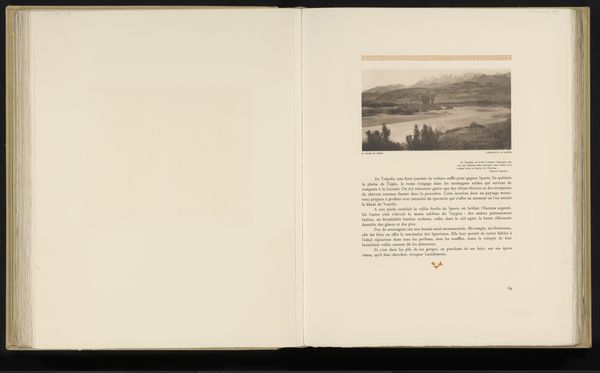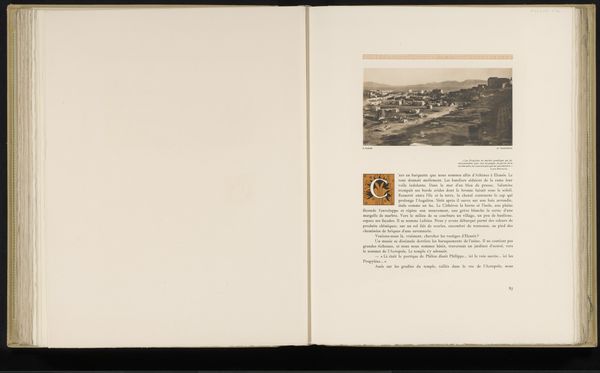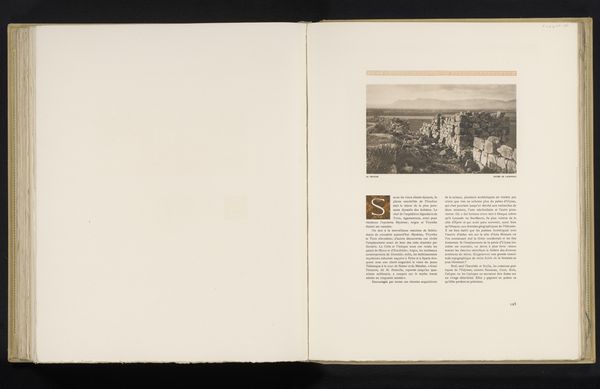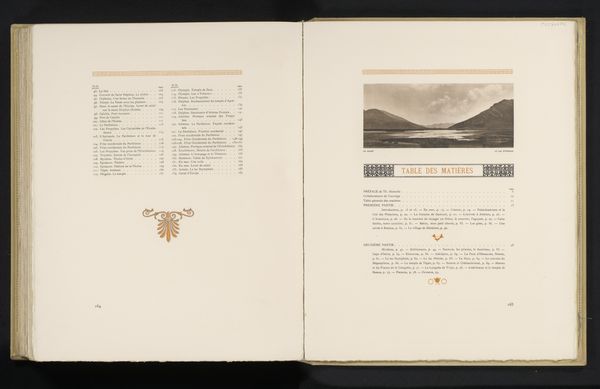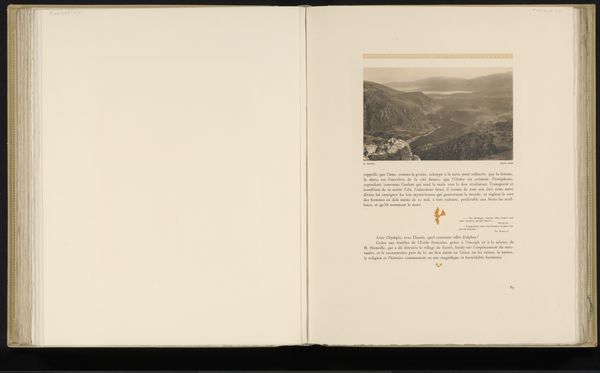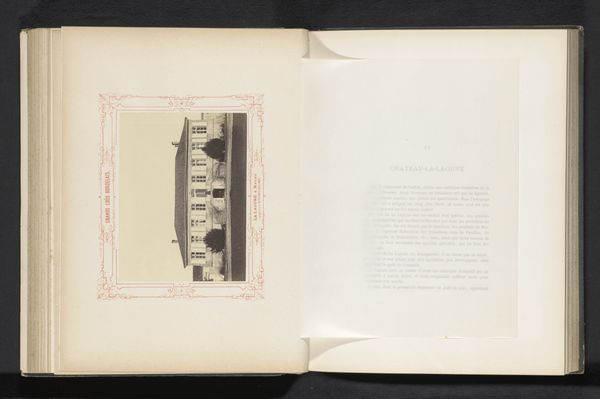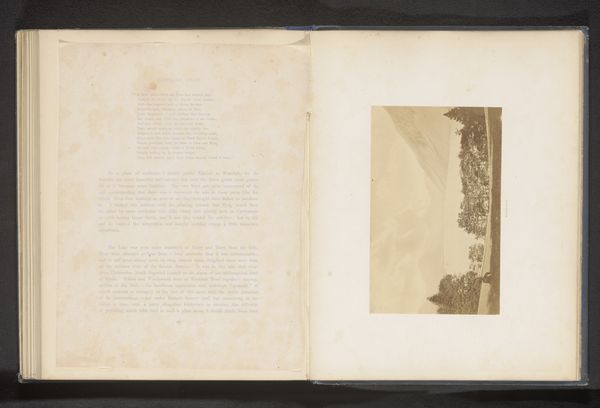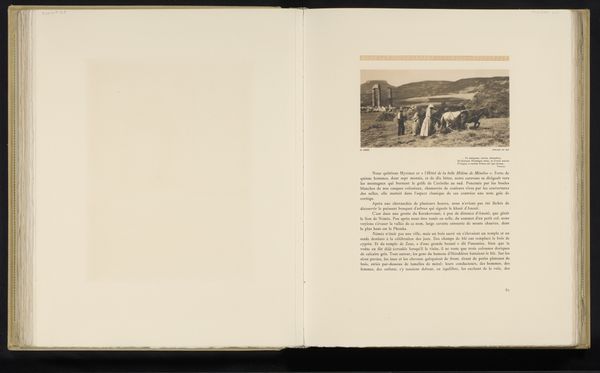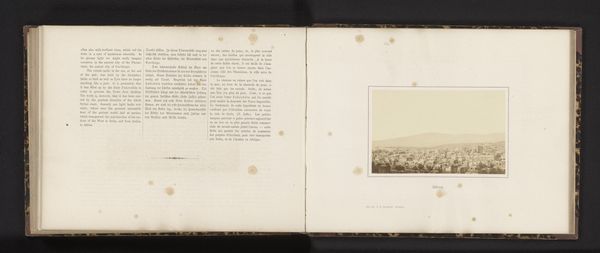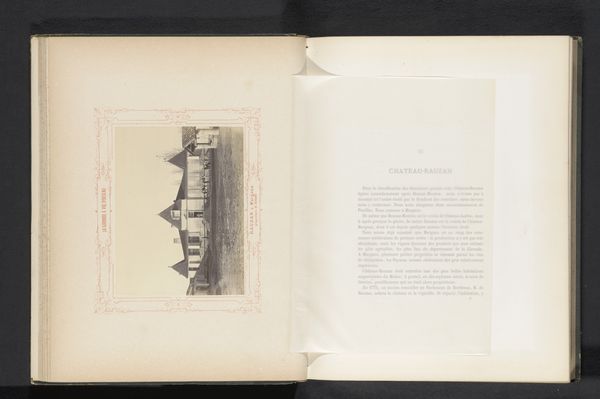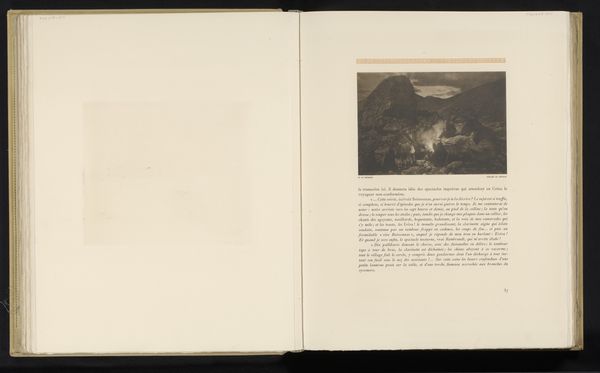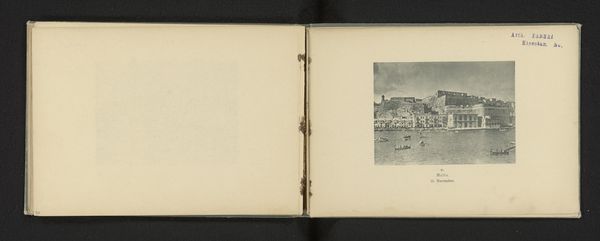
print, paper, photography
#
aged paper
# print
#
landscape
#
paper
#
photography
Dimensions: height 74 mm, width 225 mm
Copyright: Rijks Museum: Open Domain
Curator: Here we have a photogravure titled "Vallei nabij Xylokastro" – or “Valley near Xylokastro” – created before 1910 by Frédéric Boissonnas. It's printed on aged paper, giving it a unique patina. Editor: The tones are muted, almost monochromatic, and I see that the print appears to be bound into a book, which gives a textural quality even before discussing the imagery itself. What kind of paper and inks did Boissonnas use? Curator: The choice of paper does emphasize a particular cultural memory of historical documents, which often were sepia toned—giving that similar effect to this piece. It pulls forward ideas of the picturesque and Romantic appreciation of landscape, filtered through a visual encoding we associate with important documents. Editor: Speaking of “picturesque”, it definitely brings forth images of well-documented expeditions and the consumption of place—but filtered through a photographic printing process with, what I assume, are specific tonal possibilities as part of the intention of production. Are the landscape details accurately rendered? Curator: While photography aims for objective representation, choices in framing and tone were incredibly important artistic tools for Boissonnas. Note how the mountains in the background create a kind of theater for the valley. Editor: So, theater implies artifice—perhaps an attempt at the pastoral rather than documentation of any accurate view. The “hand” is deliberately concealed but deeply active. Curator: Precisely. Consider how, like classical landscape painting, this photograph offers a moral or philosophical perspective. We see a harmonious world that invites reflection, filtered through a carefully mediated image. Editor: The print being embedded within this specific context allows a certain portability to place as commodity too: consider who gets to purchase these books, and where these images end up versus the realities for laborers who constructed the landscape. Curator: True, and I’d argue it is as much a depiction of an idea about place as it is about a specific valley. It invites the viewer to step into a narrative larger than just the geographical location, one shaped by classical ideals. Editor: Interesting food for thought regarding the material processes shaping place and ideas about landscape—the politics of which are important when understanding access to beauty!
Comments
No comments
Be the first to comment and join the conversation on the ultimate creative platform.

